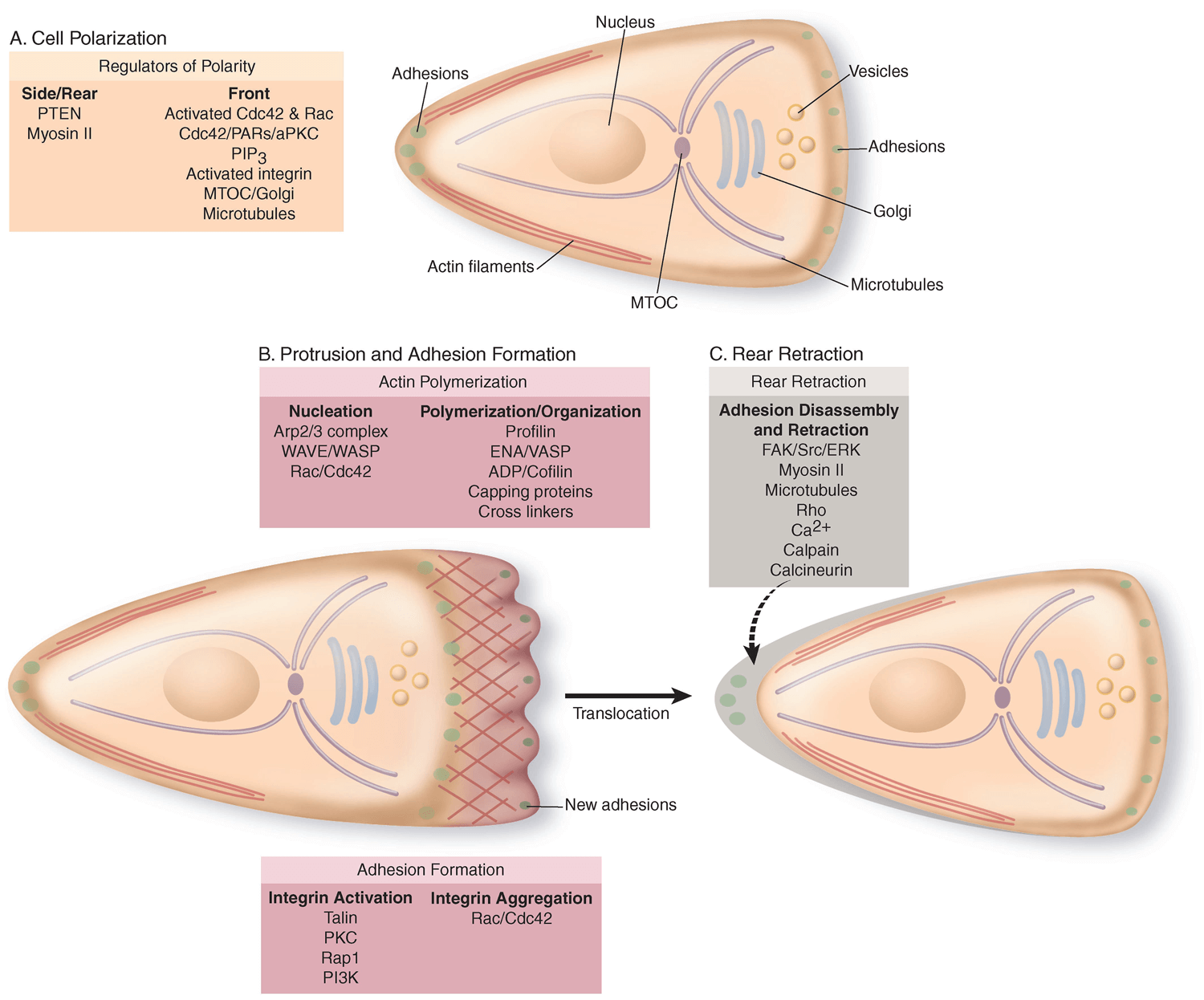Creative Bioarray provides a wide selection of tailored cell migration assays and powerful analysis to accelerate your fundamental research and drug development projects.
Introduction of Cell Migration
Cell migration is a fundamental and essential biological process for the development and maintenance of multicellular organisms. It generally refers to the translation of cells from one location to another in response to specific external signals. Cell migration is an integrated multistep process involving complex biochemical and biomechanical signal coordination. In this process, cytoskeleton filaments are dynamically rearranged, thus to regulate cell morphology and cause cellular traction.
Cell migration plays a critical role in various biological functions, such as embryonic development, morphogenesis, fertilization, wound healing, organogenesis, tissue homeostasis, inflammation, and proper immune responses. Aberrant cell migration has serious consequences and is involved in pathological development of various diseases, such as cancer, vascular diseases, intellectual disability and autoimmune disorders.
In recent years, the role of cell migration in immune response and cancer metastasis is the hotspot in clinical research. The rise in regenerative medicine, imaging techniques and bioengineering has promoted the in-depth study of cell migration mechanisms. This will be of great benefit to the discovery and development of new therapeutic strategies, such as the control of invasive tumor cells.
 Figure 1. Steps in cell migration. (Ridley A J, et al., 2003)
Figure 1. Steps in cell migration. (Ridley A J, et al., 2003)
Cell Migration Assays Available at Creative Bioarray
For different research purposes, we provide customized solutions based on but not limited to the following assays:
Wound healing assay, also known as cell scratch assay, is one of the most popular methods to study the migration of monolayer cultured cells. Cell migration towards the artificial scratch can be monitored and quantified. This assay is convenient, versatile and can be applied for high throughput screening.
Cell Exclusion Zone Assays
Cell exclusion zone assays are suitable for quantitative study of cell migration. Cells will migrate towards cell-free areas created by removable silicone-based cell seeding stoppers. This assay will not cause damage to cells or matrix, and has the ability to acquire multiplexed data.
Boyden Chamber Assays
Boyden chamber assay is a widely used technique to study cell migration. Boyden chamber is a cylindrical cell culture insert with polycarbonate membrane at the bottom. Cells seeded in the upper chamber are allowed to migrate through the pores in the presence of chemotactic agents in the lower chamber. This assay is suited for the quantitative analysis of chemotaxis, haptotaxis and chemokinesis.
Microfluidic-Based Migration Assays
Microfluidic systems, such as microarrays, have opened up new possibilities for studying cell migration in a better controlled cellular microenvironment with the highest accurate and micro-scale. Microfluidic-based migration assays can be used for high throughput screening and single cell level analysis.
3D Cell Migration Assays
Compared with two-dimensional cell culture environment, the analysis of cell migration within a physiological-like three-dimensional (3D) environment can provide more significant data. 3D cell culture can better mimic the interactions between cells and their surroundings in vivo.
Creative Bioarray can provide customized services in a timely and cost-effective manner. We have built our reputation by providing high-quality results. If you need more detailed information, please feel free to contact us. We look forward to cooperating with you.
References:
- Ridley A J, et al. Cell migration: integrating signals from front to back. Science, 2003, 302(5651), pp: 1704-1709.
- Hulkower K I, & Herber R L. Cell migration and invasion assays as tools for drug discovery. Pharmaceutics, 2011, 3(1), pp: 107-124.
For research use only. Not for any other purpose.

 Figure 1. Steps in cell migration. (Ridley A J, et al., 2003)
Figure 1. Steps in cell migration. (Ridley A J, et al., 2003)
